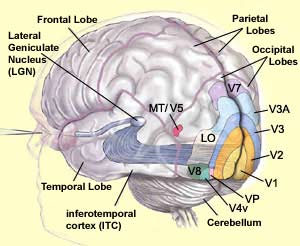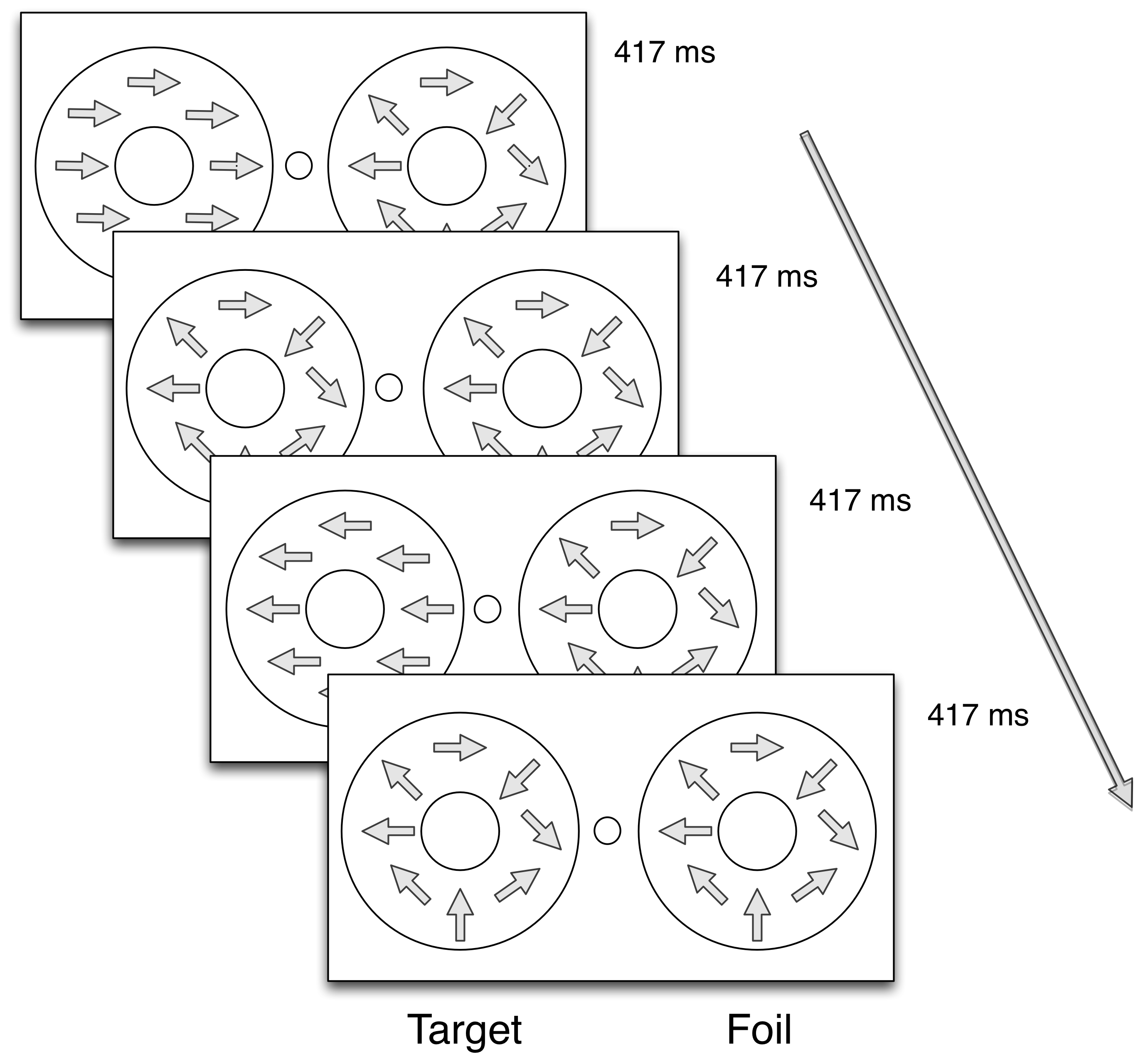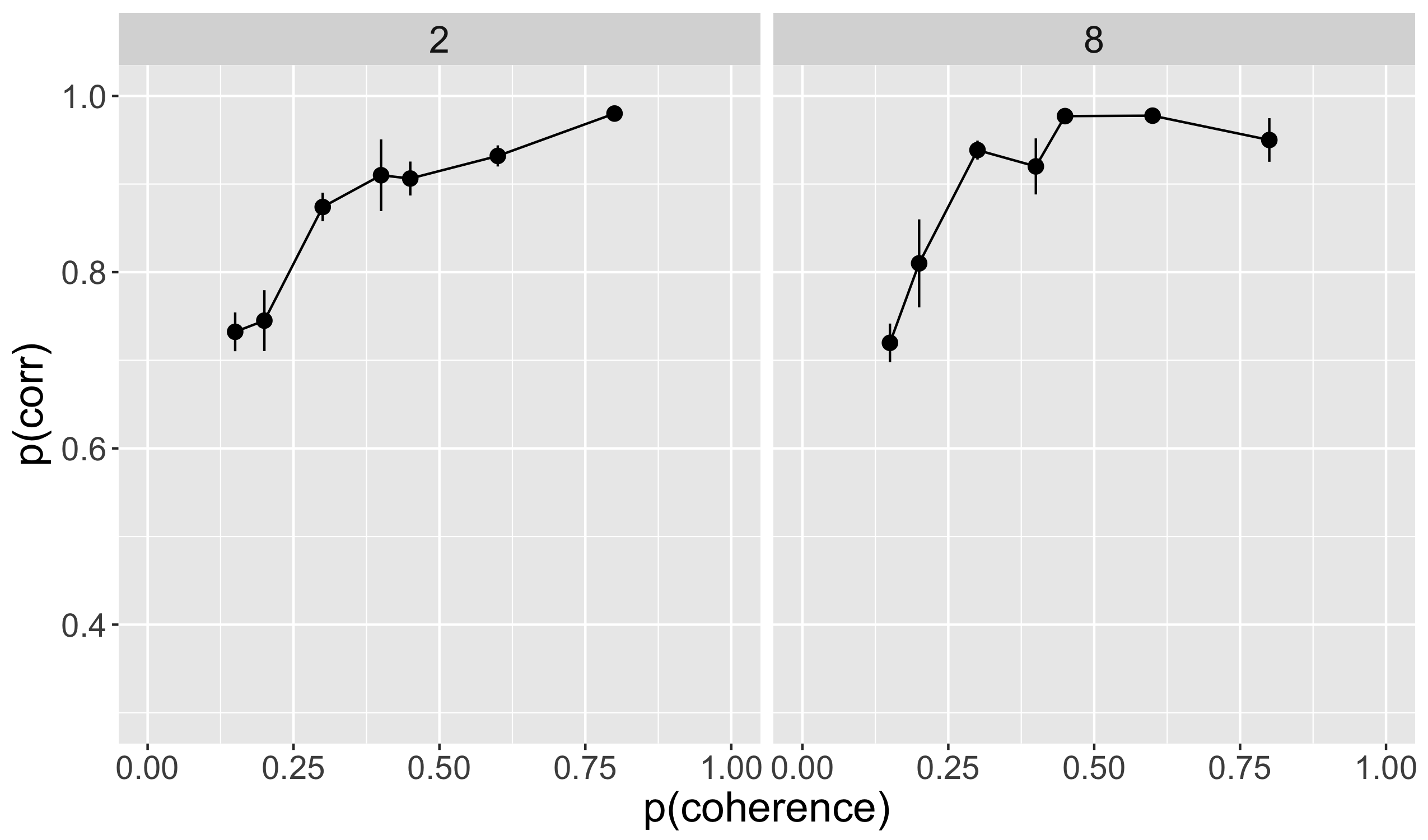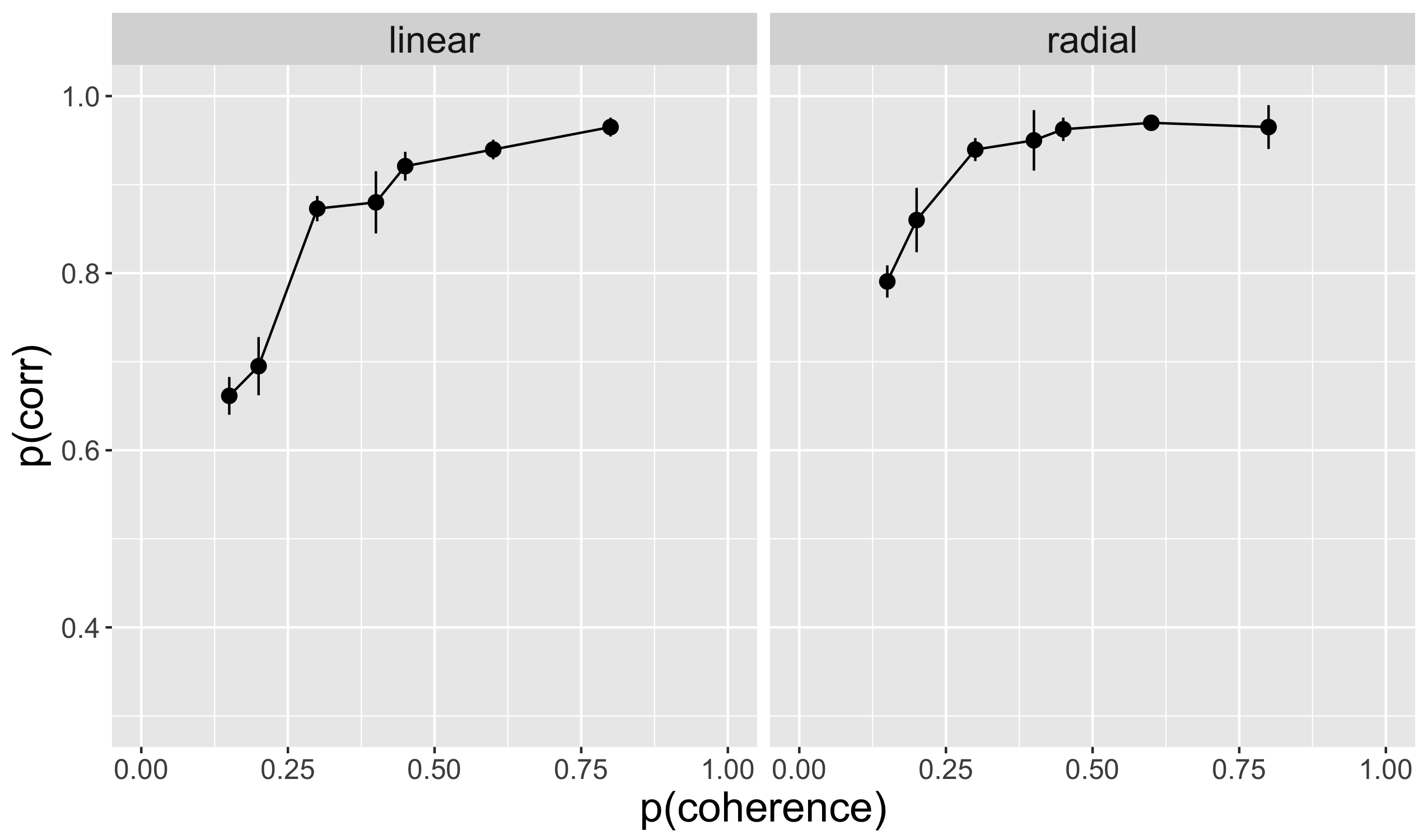Go with the flow: Babies, brains, behavior & open science
Rick O. Gilmore
Support: NSF BCS-1147440, NSF BCS-1238599, NICHD U01-HD-076595

2017-04-13 16:36:31
Go with the flow: Babies, brains, behavior & open science
Support: NSF BCS-1147440, NSF BCS-1238599, NICHD U01-HD-076595



4-6 mo-old infants: Larger brain responses to linear patterns.
4-6 mo-old infants: Larger brain responses to faster speeds.
Sensitivity to slow (linear) speeds develops slowly in monkeys.
https://nyu.databrary.org/volume/75/slot/9825/-
https://nyu.databrary.org/volume/75/slot/9825/-
https://nyu.databrary.org/volume/75/slot/9825/-




Adolph, K. (2015). Active vision in passive locomotion: real-world free viewing in infants and adults. Databrary. Retrieved February 18, 2017 from http://doi.org/10.17910/B7.123
–>
Jayaraman, S., Smith, L.B., Raudies, F. & Gilmore, R.O. (2014). Natural Scene Statistics of Visual Experience Across Development and Culture. Databrary. Retrieved February 18, 2017 from http://doi.org/10.17910/B7988V
| Country | Females | Males | Age (wks) | Coded video Hrs |
|---|---|---|---|---|
| India | 17 | 13 | 3-63 | 3.1 (0.5-6.0) |
| U.S. | 15 | 19 | 4-62 | 4.6 (0.2-7.6) |



This talk was produced in RStudio version 1.0.136 on 2017-04-13. The code used to generate the slides can be found at http://github.com/gilmore-lab/urise-2017-03-30/. Information about the R Session that produced the code is as follows:
sessionInfo()
## R version 3.3.2 (2016-10-31) ## Platform: x86_64-apple-darwin13.4.0 (64-bit) ## Running under: OS X El Capitan 10.11.6 ## ## locale: ## [1] en_US.UTF-8/en_US.UTF-8/en_US.UTF-8/C/en_US.UTF-8/en_US.UTF-8 ## ## attached base packages: ## [1] stats graphics grDevices utils datasets methods base ## ## loaded via a namespace (and not attached): ## [1] backports_1.0.5 magrittr_1.5 rprojroot_1.2 tools_3.3.2 ## [5] htmltools_0.3.5 yaml_2.1.14 Rcpp_0.12.9 stringi_1.1.2 ## [9] rmarkdown_1.3 knitr_1.15.1 stringr_1.2.0 digest_0.6.12 ## [13] evaluate_0.10
Adamiak, William, Amanda Thomas, Shivani Patel, and Rick Gilmore. 2015. “Adult Observer’s Sensitivity to Optic Flow Varies by Pattern and Speed.” Journal of Vision 15 (12): 1008. doi:10.1167/15.12.1008.
Gilmore, R. O., F. Raudies, and S. Jayaraman. 2015. “What Accounts for Developmental Shifts in Optic Flow Sensitivity?” In 2015 Joint IEEE International Conference on Development and Learning and Epigenetic Robotics (ICDL-EpiRob), 19–25. doi:10.1109/DEVLRN.2015.7345450.
Gilmore, R.O., C. Hou, M.W. Pettet, and A.M. Norcia. 2007. “Development of Cortical Responses to Optic Flow.” Visual Neuroscience 24 (06): 845–56. doi:10.1017/S0952523807070769.
Gilmore, R.O., A.L. Thomas, and J. Fesi. 2016. “Children’s Brain Responses to Optic Flow Vary by Pattern Type and Motion Speed.” PLOS ONE 11 (6): e0157911. doi:10.1371/journal.pone.0157911.
Hou, C., R.O. Gilmore, M.W. Pettet, and A.M. Norcia. 2009. “Spatio-Temporal Tuning of Coherent Motion Evoked Responses in 4–6 Month Old Infants and Adults.” Vision Research 49 (20): 2509–17. doi:10.1016/j.visres.2009.08.007.
Jouen, François, Jean-Claude Lepecq, Olivier Gapenne, and Bennett I Bertenthal. 2000. “Optic Flow Sensitivity in Neonates.” Infant Behavior and Development 23 (3–4): 271–84. doi:10.1016/S0163-6383(01)00044-3.
Kiorpes, Lynne, and J. Anthony Movshon. 2004. “Development of Sensitivity to Visual Motion in Macaque Monkeys.” Visual Neuroscience 21 (6): 851–59. doi:10.1017/S0952523804216054.
Raudies, F., and R.O. Gilmore. 2014. “Visual Motion Priors Differ for Infants and Mothers.” Neural Computation 26 (11): 2652–68. doi:10.1162/NECO_a_00645.
Yu, Chen Ping, William K. Page, Roger Gaborski, and Charles J. Duffy. 2010. “Receptive Field Dynamics Underlying MST Neuronal Optic Flow Selectivity.” Journal of Neurophysiology 103 (5): 2794–2807. doi:10.1152/jn.01085.2009.